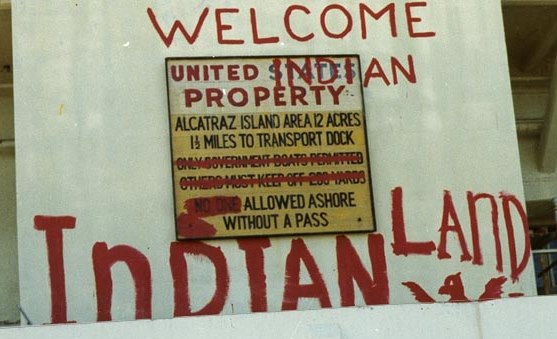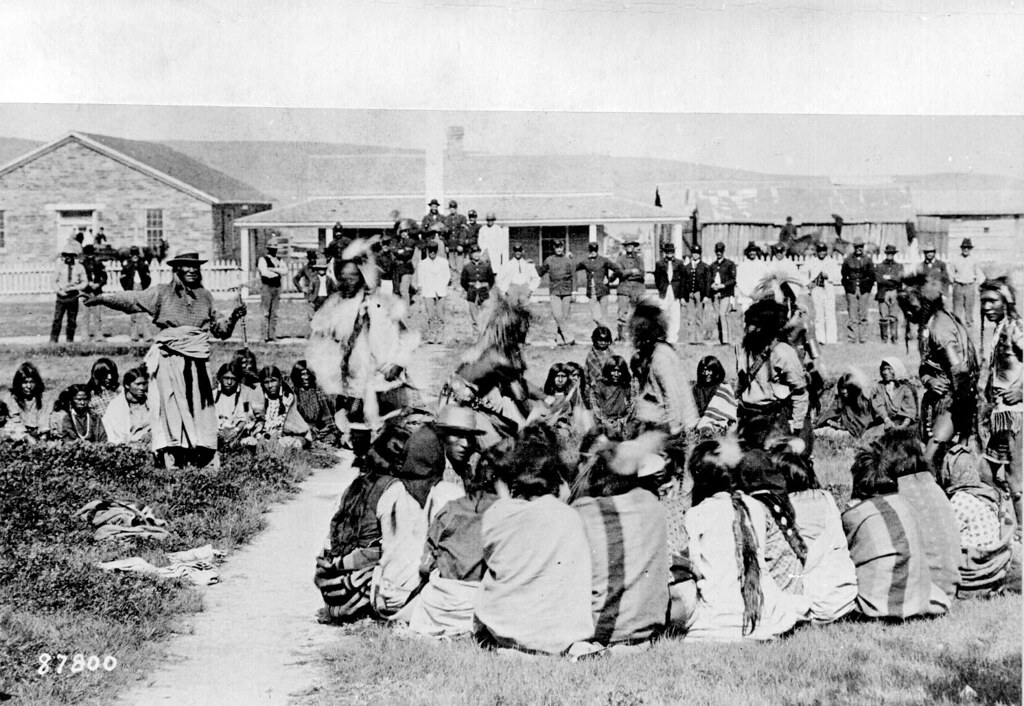“Indians are Gathering to Deliberate Their Destiny”: Native Americans Rise Up
Posted by Pete on Jul 28th 2019
Though best remembered for the Civil Rights Movement, Vietnam, and feminism, the 1960s and 1970s also saw a courageous upsurge of Native American resistance politics. The 81st birthday of Mel Thom – a leader in this movement – marks an ideal occasion to remember it.
Melvin ‘Mel’ Thom turns 81 today.
There’s a good chance you’ve not heard of him.
Mel is a Native American of the Walker River Paiute tribe in Nevada. Born in 1938, he grew up amid the defiant resurgence of Native Americans following a century of trauma and displacement.
Having been reduced to just 300,000 (from 1 million) by the rifles and greed of US 'westward expansion', the 20th century saw Native American numbers recover past 800,000 by 1960.
Above: Shoshone Indians at the Ft. Washakie Reservation in Wyoming, 1892
But population growth was one thing, the recovery of rights and freedom quite another.
Native Americans continued to be subject to systemic racism and mistreatment.
The Indian reservations – described by one anthropologist as “the most complete colonial system in the world” – were incubators of unemployment and poverty; school textbooks whitewashed and misrepresented Native American history to American children; industry tore up and polluted Indian lands at will.
Against this grim, oppressive backdrop, in the 1960s Native Americans again started taking a stand.
As a young Mel Thom observed in 1961:
“There is increased activity over on the Indian side… Indians are gaining confidence and courage that their cause is right. The struggle goes on… Indians are gathering to deliberate their destiny.”
That year, Mel co-founded the National Indian Youth Council in Chicago (a city with a habit of showing up everywhere in Radical US History), but this was just one moment in a wider flourishing of Native American radical politics.
The Fish-Ins
Over in the Pacific Northwest, Native American tribes began demanding their right to fish the Nisqually River.
The treaty which they’d signed with the US government had left them their right to this much – but now even that was being broken (as the United States had done with nearly all of the more than 400 treaties it had signed with Native Americans).
Local courts closed the rivers to Indian fishermen. But the fishermen were defiant.
Their ancestors had fished these rivers since long before North America had been called North America, and they weren’t about to stop.
And so the Nisqually Tribe and others, in the face of police violence, launched a bold campaign of peaceful ‘fish-ins’ on the Nisqually to assert their broken treaty rights.
“WE HOLD THE ROCK”
A few years later, in the early hours of 9th November 1969, seventy-eight American Indians occupied Alcatraz Island in San Francisco Bay – known as ‘The Rock’ – to announce their ongoing plight and resistance to the world.

Above: Welcome sign on Alcatraz, 1969
Their numbers soon rose past 600, despite being put under blockade by the government. The protestors announced to the world:
“We are a proud people! We are Indians Of All Tribes! WE HOLD THE ROCK!”
The peaceful occupation endured for well over a year until it was violently displaced by police.
In the meantime, it had established a centre for Native American ecology studies (along with the mass theft of its land and murder of its people, US industry and government also inflicted serious environmental pollution on Native America’s rivers, forests, and plains).
The Liberation of Wounded Knee
Not long after Alcatraz, there was another Native American occupation, this time over in South Dakota, on the scarred and sacred ground of Wounded Knee village.
Wounded Knee was a place of trauma in the cultural memory of Native America. In 1890, US soldiers had massacred several hundred Lakota Indians there, most of them unarmed women and children.
As such, the newly-created American Indian Movement (AIM) chose Wounded Knee as the site for a bold demonstration of Native American dignity and autonomy when, on 27th February 1973, 300 Oglala Sioux entered the village and declared it liberated from the United States.
The Sioux were almost immediately surrounded by an absurdly heavy show of government force – FBI, armoured cars, helicopter gunships.
But they held their ground. Despite being shot at nightly by FBI agents and suffering fatalities, the Native Americans held their ground for 71 day until negotiating a stand-down.
One Navajo Indian (who’d served in Vietnam), was asked in the middle of the showdown why there was such defiance. He said:
“People stay because they believe; they have a cause. That’s why we lost in Vietnam, cause there was no cause… In Wounded Knee, we’re doing pretty damn good, moral wise.”
Resistance is Now
When we think of ‘Native American resistance’, we often mistakenly think of the 19th century alone – of Sitting Bull and Crazy Horse; of something heroic and defiant, but also ancient and long-finished.
The truth, as you can see, is that Native American resistance is also thoroughly modern. It may have began in the distant 1800s (and earlier, against the European empires), but it has continued, through the 1960s and 1970s to the present day.
While the African-American Civil Rights Movement and second-wave feminism dominate our collective memory of post-war civil disobedience in the US, there was a whole world of Native American resistance (and armed suppression of that resistance) taking place as well – just as there is now at the likes of Standing Rock and in the still-unfinished struggle against the Keystone XL oil pipeline.
Remembering that fact is probably the best 81st birthday present we can give Mel Thom today.

